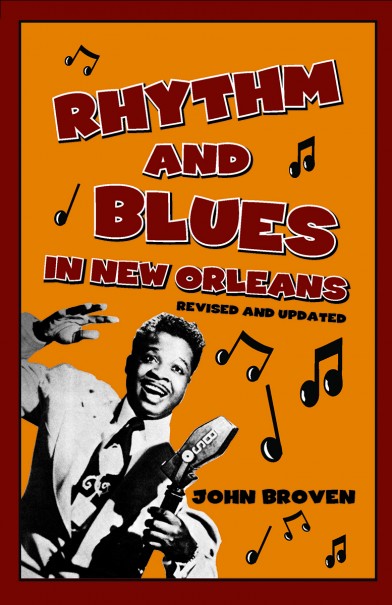John Broven’s newly revised, expanded and updated Rhythm and Blues in New Orleans, originally issued as Walking to New Orleans, is the definitive, go-to source for anyone interested in the deep origins of the rock ’n’ roll genre. While it’s fair to say that the genre’s origins are distinctly American, it’s also fair to say that a large number—if not the majority—of its early conventions percolated up in in post-war New Orleans. Broven’s encyclopedic knowledge, his painstaking research and his unabashed love for all things NOLA give Rhythm and Blues in New Orleans a fascinating combination of academic rigor and fanboy praise. South Louisiana is very different from the Bible Belt South. The combination of European, African, Caribbean and some would say “alien” immigrants makes it unique, and the music made in New Orleans in the post-war period up to the mid-’60s reflects that difference.
I grew up in a small South Louisiana town on the river south of NOLA where the received wisdom was a kind of semi-benign racism, modulated down from the hard-core racism of the Bible Belt South. But it was hard to even be a “benign” racist when your childhood heroes were all black. Fats Domino, Little Richard, Roy Brown, Smiley Lewis, Ray Charles, Shirley and Lee, Irma Thomas, to name just a few, for the music; and great looking, sharp dressed men like Chuck Willis, Sam Cooke, Jackie Wilson, Chuck Carbo, Johnny Adams, Larry Williams and Larry Darnell (great pic in the book!), just to name a few, for the style and decorum. Broven, born in small town England, didn’t carry that baggage, so he approaches this chronicle with an open mind and an open heart. He relates the joyful, sometimes sad adventures of the pioneers of the rock genre. People like Fats, Dave Bartholomew, Tommy Ridgley, Huey Smith (see also John Wirt’s compelling biography of Huey Smith: Huey “Piano” Smith and the Rocking Pneumonia Blues), Lee Allen, Red Tyler, Earl Palmer, “Hungry” Williams, Smokey Johnson, Cosimo Matassa, Herb Hardesty, Harold Battiste, the late, great and lamented Allen Toussaint, Wardell Quezergue, Deacon John Moore, Mac Rebennack, Professor Longhair… I could go on for a while here but I’ll stop and highly recommend the reader soak it up in person.
Broven also faithfully records the impact of the original record industry wildcatters (his father-in-law was one). Men like Lew Chudd, Art Rupe, the Braun brothers, Syd Nathan, the Bihari brothers, Johnny Vincent, Jerry Wexler, the Chess brothers, just to name a few, mostly Jewish entrepreneurs and businessmen who created the independent record business and exploited, in both the positive and pejorative sense, the mostly black writers, producers and artists who flourished in NOLA and who made those outsized contributions to the seminal conventions of the genre.
So before I make this a legal brief or a graduate thesis, let’s just say that Rhythm and Blues in New Orleans is a fabulous, moving and thorough paean to some of the giants of the rock genre whose contributions might sadly be overlooked.
A book to be read and re-read.




